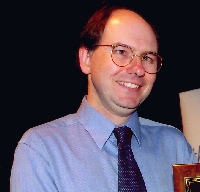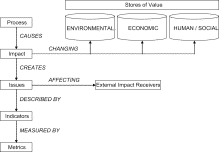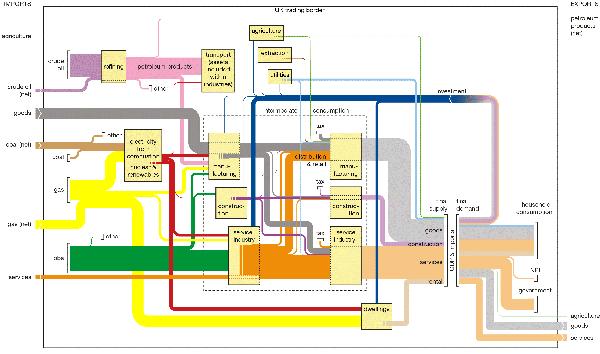 Colin
Axon
Colin
Axon
Lecturer,
Institute of Energy Futures,
Tel: +44 (0)
1895 267 932
Fax: +44 (0) 1895 816 380
E-mail: Colin.Axon
AT brunel.ac.uk
Address: Institute
of Energy Futures, Howell Building, Brunel University,
Uxbridge, London, UB8 3PH, UK.
My research is about the use of energy in the urban environment and the limits to natural resources. My main areas of interest are in transport, electricity networks, energy security, resource efficiency, and the application of robust methods for metrics and indicators.I have published more than 80 reviewed articles and technical reports.
Other areas in which I have interest are in the formation of self-organised particle films, the use of scientific and technical history as a way of engaging science with society, and the use and development of scientific demonstrations.
I am the current Chair of the Energy Group of the Institute of Physics, Member of the Energy Institute, and the IEEE.
¦ Publications ¦ Other Research Interests ¦ Public Engagement ¦
Low(er) Carbon Transport
The aim is to identify the whole infrastructure needed for the successful implementation over time of a less carbon intensive transport system. A central feature is the effects on markets and policy of using various new technologies to deliver practical low carbon solutions and pathways in the transport sector. Using a novel drive cycle analysis tool, we using real-world driving data to assess how low carbon drivetrains may actually behave. We are working too on the interactions of EVs with the electricity network (both power and economics) and the resource availability of essential materials. We have also been analysing patents for technologies related to diesel engines (road and marine) to understand better the innovation process.
 Metrics
and Indicators for Sustainability in Transport and Energy Systems
Metrics
and Indicators for Sustainability in Transport and Energy Systems
We are developing a transparent and robust way of measuring the sustainability of natural and engineered systems called the Process Analysis Method (PAM). It has been applied to several different types of system, I am particularly interested in those related to energy and transport. The PAM delivers a set of indicators and metrics with which to characterise the system.
Sustainable Mobility
We are using the PAM framework to assess sustainability in a system which has engineering, process, and service characteristics. We consider the system in terms of a process which consumes resources (such as energy and materials) and provides a service (mobility) in return. We suggest that this approach offers an effective means of generating metrics and indicators for the transition to sustainable mobility. Our initial trials have focused on the UK car fleet, and indicate that our model is able reflect the realities of this ubiquitous system and give insight into some of the small and large measures which may help us in moving to a low carbon, low energy, yet high mobility transport system.
Energy Security (ES)
There are three main groups of stakeholders in energy security: the Government, businesses, and society (individuals and communities, each with different objectives, and thus best served by their own particular set of indicators. These indicators need to encompass the issues raised by policy, in supply chains, and international relations. There are many ES assessments, but few measures are used in practice. We are most interested in how indicators and metrics of energy security can be broadened to take account of a wider range of factors relevant to long-term energy security. I conrtibuted to the Energy Security in a Multipolar World research cluster.
Electricity Distribution Networks
I collaborate with power engineers, computing scientists, and policy and social researchers on various projects deploying a wide variety of research methods.
UK Smart Grid (SG) Scenarios
With this UKERC-funded project we aim to advance understanding of SG deployment and utilisation through a programme of novel empirical research, developing and evaluating a number of socio-technical scenarios. Particular consideration is being given to key transition points – rather than mere end points – in alternative possible scenarios, and spatial differences in the deployment of SGs and related technologies, from the imminent 2020 target to 2050. The work builds the interaction of different actors into the scenario-development process to incorporate pace and scalability of technology deployment, cost and finance, organisational business models involved, regulatory style, the role of users, and international drivers and linkages.
Residential and Commercial Power Demand and Dynamic Tariffs
We are using data mining techniques on large and difficult to handle datasets to find useful features and correlations. In particular, we are working on the effects of tariff switching. We have developed a novel stochastic occupancy model to emulate millions of residential customers. Properly accounting for non-domestic users is becoming more important and will be a significant step forward in these models. We have been using an extensive UK database of an aggregator to investigate the winners and losers when switching between static, time-of-use, and dynamic tariffs. Our work on the data mining of European residential power use shows that we can distinguish between types of household, occupants, and other features. We have an EPSRC project entitled Advanced Dynamic Electricity Pricing and Tariffs.
Agent-based Modelling of Dynamic Behaviours in Electricity Networks
The electricity networks of the future will have to adapt to various low carbon technologies. These future smart grids are going to need new ways to design them, and so-called "agent-based models" (ABMs) are one possible way to help do this. ABMs assume that a large number of independent agents act according to simple sets of rules. The interactions between the agents can lead to interesting emergent behaviours. An electricity distribution network can be analysed in terms of agents - for example, in the future, electric vehicles may be the main form of transport, and customers ('agents' in modeling terms) will be deciding when to recharge their car from the electricity grid. This will place a big demand on the system and therefore will have an effect on the network. We are trying to understand how the network may behave under various conditions e.g. when there are lots of electric vehicles, dynamic electricity tariffs, increasing numbers of photovoltaic arrays, wind turbines etc.
 Whole
Economy Energy Modelling
Whole
Economy Energy Modelling
Investigating the structure and function of an economy in a resource-constrained world requires an understanding of the relationships of its fiscal, social, and environmental elements. The 7see framework and model is a novel whole-economy analytical framework which harmonises multiple national accounting procedures. The fiscal elements align with the international system of national accounts and the energy elements align with physical constraints. In a modular fashion, the 4see framework curates and maintains disparate accounts (economic stocks and flows, energy use, employment, transport) in parallel, but retains each of their unique measurement unit and accounting requirements. We demonstrate how the data organisation and conditioning procedures are generic and enabled model development for other countries. The framework is capable of exploiting time-series ratios between different measurement units give key functional relationships that vary gradually over time, are robust and thus useful for analysing national policy complexities such as decarbonisation, employment, investment and balance of payments. The 4see framework is neither an exclusively economic, physical or social model. It upholds the integrity of each world-view through retaining their unique time-series datasets. This has the potential to reduce tension between competing models and philosophies of economic development, societal change, environmental refurbishment, and climate change mitigation.
Improving the Energy Performance of Tenanted Commercial Property
Reducing energy use in tenanted commercial property requires greater understanding of 'buildings as communities' in order to maximise the potential for energy efficiency and demand reduction. Tenanted commercial properties represent the intersection of two different types of communities: (1) the divergent communities that share specific buildings and (2) the organisational communities represented by multi-site landlord and tenant companies. Both groups are 'communities of practice' in which knowledge can be spread and expertise nurtured. In any particular tenanted space the opportunity for environmental change within these communities is mediated (hindered or enabled) through the lease. This discussion draws on theoretical and practical understandings of (i) the socio-legal relationships of landlords, tenants and their advisors; (ii) the real performance of engineering building services strategies to improve energy efficiency; (iii) how organisational cultures affect the ability of the sector to engage with energy efficiency strategies; and (iv) the financial and economic basis of the relationship between owners and occupiers. The transformational complexity stems from: (i) the variety of commercial building stock; (ii) the number of stakeholders (solicitors, investors, developers, agents, owners, tenants and facilities managers); (iii) the fragmentation within the communities of practice; and (iv) leasehold structures and language. This discussion is located in the international context and sets out and justifies an agenda for truly interdisciplinary research that brings together both the physical and social sciences of energy use in buildings so that technological solutions are made effective by an understanding of the way that buildings are used and communities behave.
Last updated: 06/01/14 ©2014 C.J. Axon.